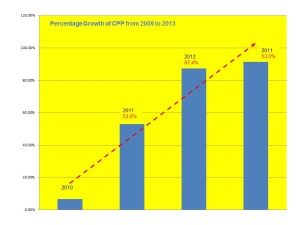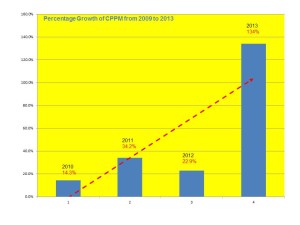
Robert Menard
Certified Purchasing Professional,
Certified Professional Purchasing Consultant, Certified Green Purchasing Professional, Certified Professional Purchasing Manager
Editor’s Note: This is the third part of a four part series on using professional negotiation skills as applied to personal life. The tone is intended to be light and instructive but ultimately demonstrates just how critically important your negotiation skills can be in this entirely (certainly so) “hypothetical” story. See also the Set Up of Part 1, Research, Planning, and Strategy of Part 2, and Lessons Learned of Part 4.
The face to face meeting
On the Monday of Thanksgiving week, dad and Jane returned to the campus where we (I meant to say, they) visited the campus police. This armed and very professional law enforcement cadre had been called after the fracas early Saturday morning. The two officers interviewed were straight down the middle as to facts and enforcement measures but volunteered what they termed “irregularities” in the college’s disciplinary actions.
They advised us that two young men were expelled earlier in the semester after confrontations involving physical violence in one case, and the use (or at least illegal carrying) of a fire arm in another. In both cases, criminal charges were referred to local police. Upon hearing this, dad took on a “Tarzan” persona and decided that the King of the Jungle would swing this Win-Lose strategy and make a monkey of the opposition who clearly had a “take no prisoners” philosophy. Indeed, the foolish policy of “zero tolerance” is almost always disastrous. In this case, the college would not differentiate between felonious acts and a scrap between two roommates even though the history of bullying was in evidence.
At the housing office, Jane and Tarzan were met by the college housing manager, an imposing woman of 6 foot 4 inches in height, but miniature in authority and proportionately small in logic and knowledge. Let’s call her Lilly, short for Lilliputian . Because of the holiday calendar, all high ranking college officials who could over rule the low level bureaucratic decision were “unavailable”. Tarzan recognized the “Higher authority” tactic immediately so ran through the motions of destroying silly and unjustified objections with until his patience was exhausted.
According to dad’s instructions, Jane pointed out in highlighted passages the many citations in the college’s documents that demanded actions that the college had ignored. Lilly insisted at every turn of Jane’s contentions that the language in the documents was “subject to interpretation”. Upon direct questioning from Tarzan if Lilly had ever read the college’s policies and procedures documents, she said that “It was not necessary”.
The trump card and cannon fire
Then dad played the ace and asked about bullying that had been reported but ignored. Dad pressed the point about physical intimidation of the 300 pound roommate against the 120 pound Jane. Lilly noted in a huff that she knew all about intimidation due to her height. Further, she was expressed feigned offense that dad would cite bodily and cultural differences between the roommates. This heretofore very uncooperative Lilliputian woman collapsed into submission when dad introduced three truths.
- Because of her height, Lilly should have been more sensitive to intimidation
- Her reference to body weight reflected her prejudice; clearly, a body outweighing another by 250% is a significant bullying factor and not subject to “interpretation”
- Dad thanked Lilly not to impute her prejudices toward his daughter or into the travel of the case
The cannon fire followed playing of the trump card. On cue, Jane slipped the highlighted college authored document which said unequivocally, “under no circumstances shall any student be subject to denial of tuition or housing services for which full payment has been made and that expulsion or removal from campus can only be ordered by the college president and then, only after all appeals have been exhausted.” Tarzan asked straight faced if another interpretation of that quote was possible.
 Time for Tarzan to swing
Time for Tarzan to swing
Dad then asked Lilly to find someone who had authority as he had travelled a long way and no one was yet responsive. He warned that the college was clearly in violation of its own policies and procedures and that he had proof that the college’s self-proclaimed case by case evaluation was in fact a “zero tolerance policy which caused daughter Jane to be lumped into a class of felons. Dad’s threat was that it would be a lot easier to handle things today as the matter would escalate to an unpleasant height if he were to be ignored. This was an ultimatum.
Lilly left the room in high dudgeon, asking Tarzan and Jane to wait a short time. Within a few minutes, authorities at the executive level, who had mysteriously been unavailable, appeared in the form of three high officials, including the Chief Operating Officer of the 12,000 student junior college. Jane later thanked dad for the lesson of how effective preparation could be in bringing recalcitrant parties to the table.
Rather than rehash the demolished arguments that were Lilly’s demise, Tarzan resorted to some small talk to relieve any negative expectations that been put into the trio’s their ears by Lilly. When the high level reps defended the party line, Tarzan re-applied the trump card and cannon fire. Incredibly, it seems that Lilly had not informed the brass had of either argument. It seems likely that no one else in the room, save for Tarzan and Jane had read them.
The COO, let’s call him Honest Abe, asked for a moment to confer with his folks. Upon immediate return, he directed everyone but Tarzan to leave the room and gave no reason why. They college reps walked out in confusion and Jane walked in with knots in her stomach.

Click for Bob’s 3 CD set
An unexpected twist
Surprises are never good in business negotiations but are to be expected when parties have set out adversarial positions and stated a “Win-Lose” strategy. Abe was a formidable character and would no doubt be an able opponent if the two men went to the mat but he had another solution in mind. He conceded that Tarzan and Jane had clearly done their homework and that the college had made mistakes of omission and commission.
His next sentence was a surprise. “I do not want to tangle with you. While I would win a short term victory, the cost of you coming after the college in defense of your daughter would surely lead to a long term and perhaps decisively expensive defeat.” As Tarzan paused to consider Abe’s words, the silence was broken by explanation so there was no mistaking the offer. Abe asked if Tarzan thought that Jane needed to learn a lesson. Abe had softened his approach and Tarzan reciprocated by agreeing. Abe then stated his offer. “There are only ten class days left. If you allow me to ban her from the dorm, I’ll credit you the rent and allow her to take classes.”
Tarzan’s training and instincts should have led to rejection the first offer but he said nothing. Abe went on to offer no discipline on Jane’s record. He then exposed the college to potentially much greater damage by admitting that the lack of compatibility measures was a foolish policy. He also noted that customers like Jane’s parents, who pay full boat need extra consideration.
Tarzan faced a decision. Abe had made a reasonable offer but was in a position to lose a great deal if the matter were not settled. To reject the offer, Abe would endanger his daughter’s semester at school. Jane also needed to learn a lesson in maturity and responsibility.

Click for Bob’s 2 CD set
Agreement
Tarzan put aside his instincts and training and did not attempt to negotiate a better offer. Abe had exposed his throat first, based upon what he later admitted to be a sizing up of Tarzan as a reasonable man. Abe gambled that Tarzan would accept the temporary pain for Jane, admittedly deserved, in return for a clean slate. The temptation to break the college’s back financially was tempting but litigation (equal to the failure of negotiation) is never a sure bet. Jane’s future was more important.
The two men shook hands in agreement with little about four minutes of expired time. They then engaged in another 45 minutes of lively banter about politics, education, business experiences, and holiday celebrations. They broke company with a promise to stay in touch and they have done so.
Cleaning up the mess
Jane observed how the life skill of negotiation impacts and can overcome mistakes on the path toward maturity and responsibility. Her esteem for her father grew in ways which she will only come to appreciate as she matures and raises her own family.
Dad confirmed his belief in good faith by accepting the candid concessions of a seeming adversary who became an ally.
The bureaucrats at the college, as far as we know, were subsequently educated and trained in how to handle such matters in a far better and more customer service fashion.
The lessons learned are next.










